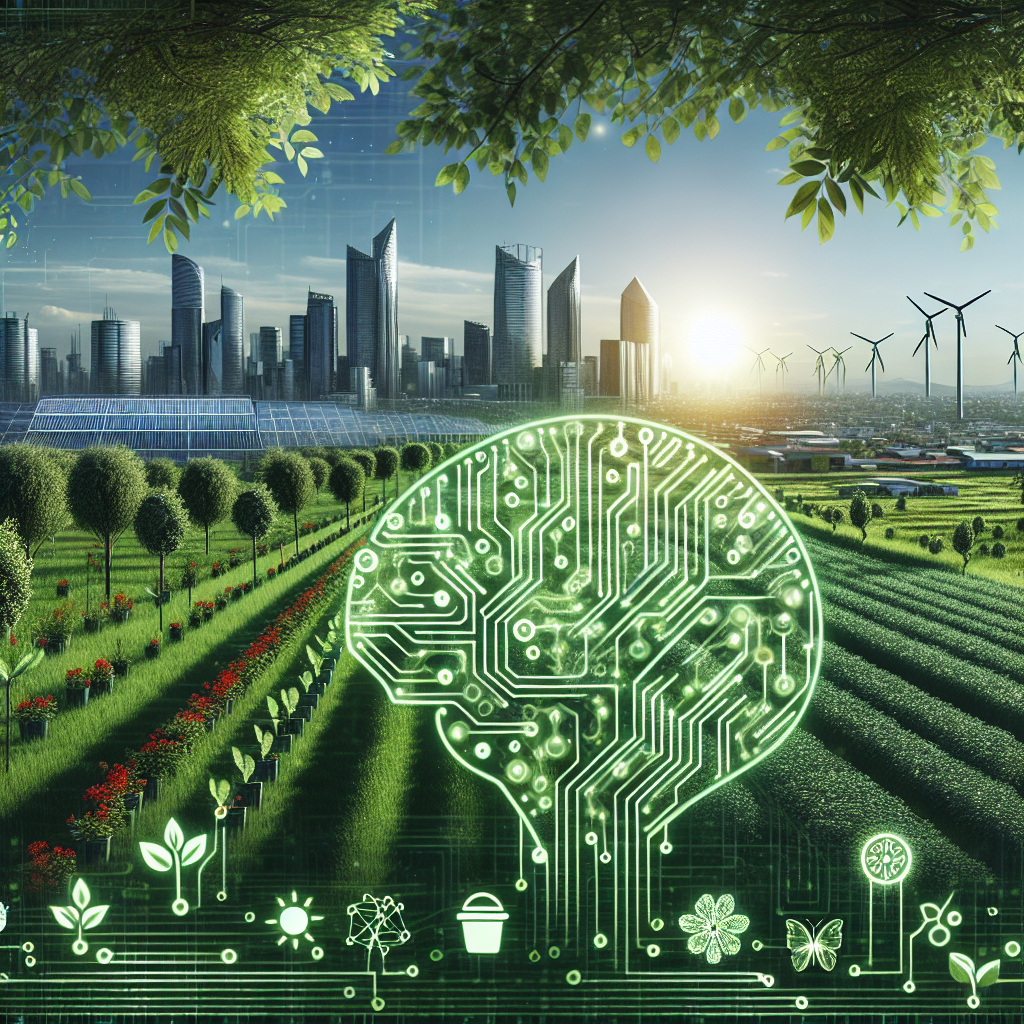Building a Greener Future with AI Technology
In recent years, the discussion around climate change and the need for sustainable practices has become more urgent than ever before. With the increasing threat of global warming and its devastating effects on our planet, it has become imperative for us to find innovative solutions to combat this crisis. One such solution that holds great promise is the integration of artificial intelligence (AI) technology in building a greener future.
AI technology has the potential to revolutionize the way we approach environmental challenges by providing us with new tools and insights to make more informed decisions. From optimizing energy consumption to managing waste more efficiently, AI can help us create a more sustainable and eco-friendly world. In this article, we will explore how AI technology can be leveraged to build a greener future and address some frequently asked questions regarding its implementation.
Optimizing Energy Consumption
One of the key ways in which AI technology can contribute to a greener future is by optimizing energy consumption. By analyzing data from smart meters, sensors, and other sources, AI algorithms can identify patterns and trends in energy usage, allowing for more efficient energy management. This can help reduce energy waste, lower carbon emissions, and cut down on utility costs.
For example, AI-powered energy management systems can automatically adjust heating, cooling, and lighting settings in buildings based on occupancy levels, weather conditions, and other factors. This can lead to significant energy savings without compromising comfort or productivity. Additionally, AI can help optimize the operation of renewable energy sources such as solar panels and wind turbines, maximizing their efficiency and reducing reliance on fossil fuels.
Managing Waste More Efficiently
Another important area where AI technology can make a difference is in managing waste more efficiently. By analyzing data on waste generation, collection routes, recycling rates, and landfill capacity, AI algorithms can help municipalities and businesses optimize their waste management processes. This can lead to reduced landfill usage, increased recycling rates, and lower carbon emissions associated with waste disposal.
For instance, AI-powered waste sorting robots can identify and separate different types of recyclable materials with high precision, reducing contamination and increasing the value of recycled goods. Similarly, AI algorithms can optimize collection routes for garbage trucks, minimizing fuel consumption and emissions while ensuring timely and cost-effective waste disposal.
Monitoring and Protecting the Environment
AI technology can also play a crucial role in monitoring and protecting the environment. By analyzing satellite imagery, sensor data, and other sources, AI algorithms can track changes in land use, deforestation, air and water quality, wildlife populations, and other environmental indicators. This information can help policymakers, conservationists, and other stakeholders make more informed decisions to preserve and restore ecosystems.
For example, AI-powered monitoring systems can detect illegal logging activities in real-time, allowing authorities to intervene and prevent further damage to forests. Similarly, AI algorithms can analyze air quality data to identify pollution hotspots and develop targeted strategies to reduce emissions and improve public health. By leveraging AI technology, we can better understand and address environmental challenges on a global scale.
Frequently Asked Questions
Q: How can AI technology help in reducing carbon emissions?
A: AI technology can help reduce carbon emissions by optimizing energy consumption, managing waste more efficiently, and monitoring environmental indicators. By analyzing data and identifying patterns, AI algorithms can help identify opportunities for energy savings, reduce waste generation, and develop strategies to mitigate the impact of climate change.
Q: Is AI technology expensive to implement for building a greener future?
A: While the initial cost of implementing AI technology can be significant, the long-term benefits in terms of energy savings, waste reduction, and environmental protection can outweigh the costs. Many AI solutions are designed to be cost-effective and scalable, making them accessible to a wide range of organizations and industries.
Q: Can AI technology be used to address other environmental challenges beyond climate change?
A: Yes, AI technology can be applied to a wide range of environmental challenges, including biodiversity loss, water scarcity, soil degradation, and pollution. By analyzing data and generating insights, AI algorithms can help develop solutions to these complex issues and promote sustainable practices in various sectors.
Q: What are some examples of successful AI projects that have contributed to building a greener future?
A: Some successful AI projects that have contributed to building a greener future include Google’s DeepMind AI system, which optimized the cooling systems in data centers to reduce energy consumption, and Microsoft’s AI for Earth program, which uses AI technology to support environmental initiatives such as biodiversity conservation and climate change adaptation.
In conclusion, AI technology holds great potential in building a greener future by optimizing energy consumption, managing waste more efficiently, and monitoring environmental indicators. By leveraging AI algorithms and data-driven insights, we can develop innovative solutions to address the urgent challenges of climate change and promote sustainable practices in various sectors. With continued investment and collaboration, AI technology can play a key role in creating a more sustainable and eco-friendly world for future generations.

